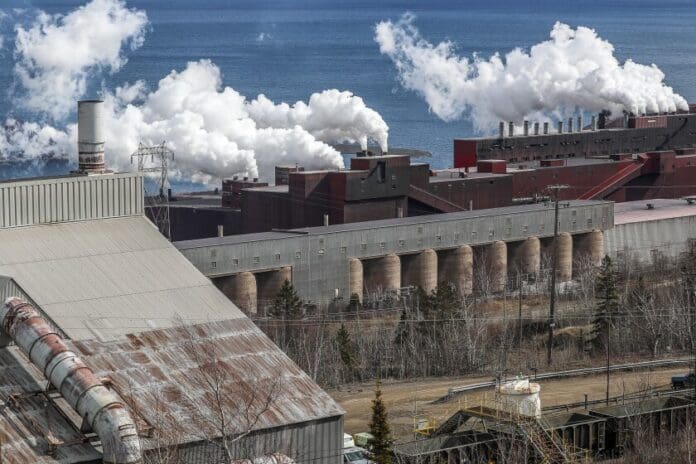Based on the DNR’s Record of Decision dated March 4th of this year, Northshore Mining has been given a green light to proceed with the expansion, or extension, of the Mile Post 7 tailings pond. There are, however, questions that remain unanswered or at least need to be clarified for the public. For example, what is the distinction between a mine expansion versus an extension? In last week’s article, I reported that according to the DNR, available tailings storage at Mile Post 7 will not be increased from what it was originally designed to contain. I apparently confused “dam extensions’ with dam height. I apologize for this mistake and would appreciate clarifying information from folks at North Shore Mining. The numbers given in the article refer to elevation above mean sea level, not height added to any of the MP 7 dams. Company officials are invited to clarify plans for Mile Post 7 or correct me on any inaccuracies. Retractions and corrections will be printed for the record. The point of these articles is to encourage transparency and offer balanced reporting, hearing from both the citizenry and the company on something impactful to both the citizenry and the company.
Cleveland-Cliffs Environmental Stewardship Statement reads in part, “Cleveland-Cliffs takes great pride in our environmental management program and efforts. Our business is highly regulated and we understand the importance of maintaining compliance and going beyond what is expected to be a good corporate citizen. Our environmental policy is based on an understanding that we have a responsibility to preserve the environment for future generations.” Interested readers can get more information about Cliff’s environmental management efforts by checking out their Sustainability Report 2023 at clevelandcliffs.com.
Cleveland-Cliffs has actively worked to reduce their greenhouse gas emissions (GHG) over the last three years. The company has set a goal of reducing GHG by 25% by 2030 with the overall plan of moving “toward near zero GHG emissions by 2050 in alignment with the Paris Climate Agreement”. Thankfully, leadership at Cleveland-Cliffs does not listen to climate deniers like Senator Ron Johnson (R-Wisc), who would chastise them for even trying to reverse the impacts of industrialization on the climate. It’s encouraging to know that there are people in industry who don’t believe that climate change is a hoax. Maybe we will all be able to breathe a little easier this summer.
While tailings dams do have an impact on air quality, the focus of concern is usually on the effect that tailings dams have on watersheds and the flora, fauna, people and infrastructure that exist near them. The point of this series of articles is to try to get answers to those kinds of questions. In a report from 2015 by the National Park Service entitled Long-Range Risk of Tailings Dam Failure, author David M. Chambers points out that (as of 2015) there were over 3,500 tailings dams located around the world. What is the failure rate among those dams? According to the Chambers article, the “International Commission on Large Dams (ICOLD) convened several studies to investigate tailings dam failures. In the 10 years since the ICOLD 2001 report, the failure rate of tailings dams has remained at roughly one failure every eight months, or about three failures every two years”. The ICOLD report goes on to report that China and Canada are two countries with the worst safety records. “Canada has had seven accidents since 2011, while China has had eight. Chile registered five separate tailings dam failures in 2010, according to the report, while the U.S. saw five tailings dam accidents over the past decade”.
While there are a number of causes of tailings dam failure, the U.S. Environmental Protection Agency lists overtopping as a primary concern. “Overtopping occurs when sufficient freeboard (the distance between the top of a dam and the impounded water level) is not maintained and the water level behind the dam rises due to heavy rainfall, rapid snowmelt, flooding or operator error”. Clearly, each of the causes of overtopping can be monitored. That being the case, it would be appropriate for Cliffs / Northshore Mining to be very clear with the public on how exactly it will monitor Mile Post 7, not only on a regular basis, but over the long term as well.
Residents of the area surrounding Silver Bay were asked to share their thoughts and concerns about the expansion of the Mile Post 7 tailings dam. While their collective responses do not equate with a scientifically designed survey, they do represent the perspectives of some folks who live in proximity to Mile Post 7. Some respondents asked that their names not be used. I chose to omit the names of all responders in the interest of treating everyone in a uniform manner.
One Beaver Bay resident said, “I wish they would have a meeting for the people most affected”. A resident of Silver Bay stated, “I would like to know what would happen if it fails, what is the mining company prepared to do, are they liable for the damage”? Another Silver Bay resident responded by saying, “I need to know more about it before commenting”. A fourth area resident said, “I think it’s important to have a public meeting in Beaver Bay or Silver Bay. We need to hear the facts from Northshore Mining, MPCA and environmental experts; and have time for citizen response”.
An official from the area made these comments. “I am in favor of the expansion for the following reasons.
What are the alternatives? Nearly everyone from Beaver Bay or Silver Bay has worked at the plant at some point in their lives. It’s still the largest and highest paying employer in both cities. Closing would be a financial disaster for many. The tourist industry keeps expanding but many of those jobs are lower paying and seasonal. Cleveland Cliffs does control another processing plant inland so they could return much of their processing to that plant leaving the folks working here with not too many options.
Build higher damns. Currently there are three dams containing the tailings produced over the last 40+ years of processing. One of them is over a mile long. To continue processing here without the expansion will mean building these dams higher. The hydraulic forces on dams go up considerably as the height is increased. It seems much safer to expand out rather than up. These dams are carefully monitored by a sizable crew of very qualified personnel and hundreds of sensors. If the plant were to stop using Mile Post 7, would the quality of monitoring stay the same?
A couple years ago Cleveland Cliffs contracted Barr Engineering to conduct a study on worst case scenarios if a dam were to fail. A large group of Emergency response people were gathered to review the study and settle on a response action plan. I was invited to attend. The plan was incredibly thorough, down to the time, water/slurry heights and velocities. It identified all landowners affected and who and when evacuation would need to take place. The good news for some citizens is that none of their places would be immediately affected by a dam failure. Of course, it would create a huge mess and affect the lake for who knows how long. I’m in favor of doing whatever makes that scenario less likely to ever happen. Expansion seems to me to be the best way of ensuring that by keeping it active, well monitored and keeping damn heights lower. As part of the emergency action plan meeting, we were given a bus tour of Mile Post 7. The expansion area was obvious and appeared very reasonable to me. Given the incredible amount of Lake County currently owned by the government and large environmental non-profits (Nature Conservancy, etc.) I feel sacrificing a few acres to industry is not too much to ask.”
Tailings dam failure happens because someone missed something. Perhaps instruments like piezometers and other safeguards that measure for liquefaction, seismic activity or dam stability fail. Perhaps, given the increasing frequency of severe weather events, overtopping happens without someone noticing before it’s a problem. Certainly, North Shore Mining isn’t playing fast and loose on safety with regard to Mile Post 7 but the fact is that accidents do happen. The pipeline that ruptured last month at Silver Bay, dumping 140,000 gallons of “process water” into Lake Superior, is a case in point.
From a historical standpoint, corporate transparency with regard to the quality control of products and the impact that production practices have on the environment, has not always been sufficient. The current situation at Boeing comes to mind. While Cleveland-Cliff’s environment statements indicate they are paying close attention to environmental impacts, public awareness and input is also necessary. An article in MINNPOST, (an independent journalistic nonprofit publication), published in August of 2020 and entitled Responsible Mining? Minnesota Has A Long Way To Go, spoke to this need for public scrutiny. Authors Janet Keough and Bill Hansen address the practices of the PolyMet / Glencore copper-nickel mine. The authors promote the use of “independent certification systems” when it comes to monitoring tailings sites. They go on to assert that the PolyMet / Glencore site “would fail any science-based independent certification system”. While that may or may not be the case with regard to PolyMet, the authors bring up an important point. They write, “the goal of tailings management must be zero harm to people and the environment; safety – not cost – must be the determining factor in design”. While the executives at Boeing may want to argue that point, it appears that the rest of us, including the folks who run Northshore Mining, would be well served by having more open discussion in the hope that both common understanding and common ground can be reached regarding what’s happening at Mile Post 7.








